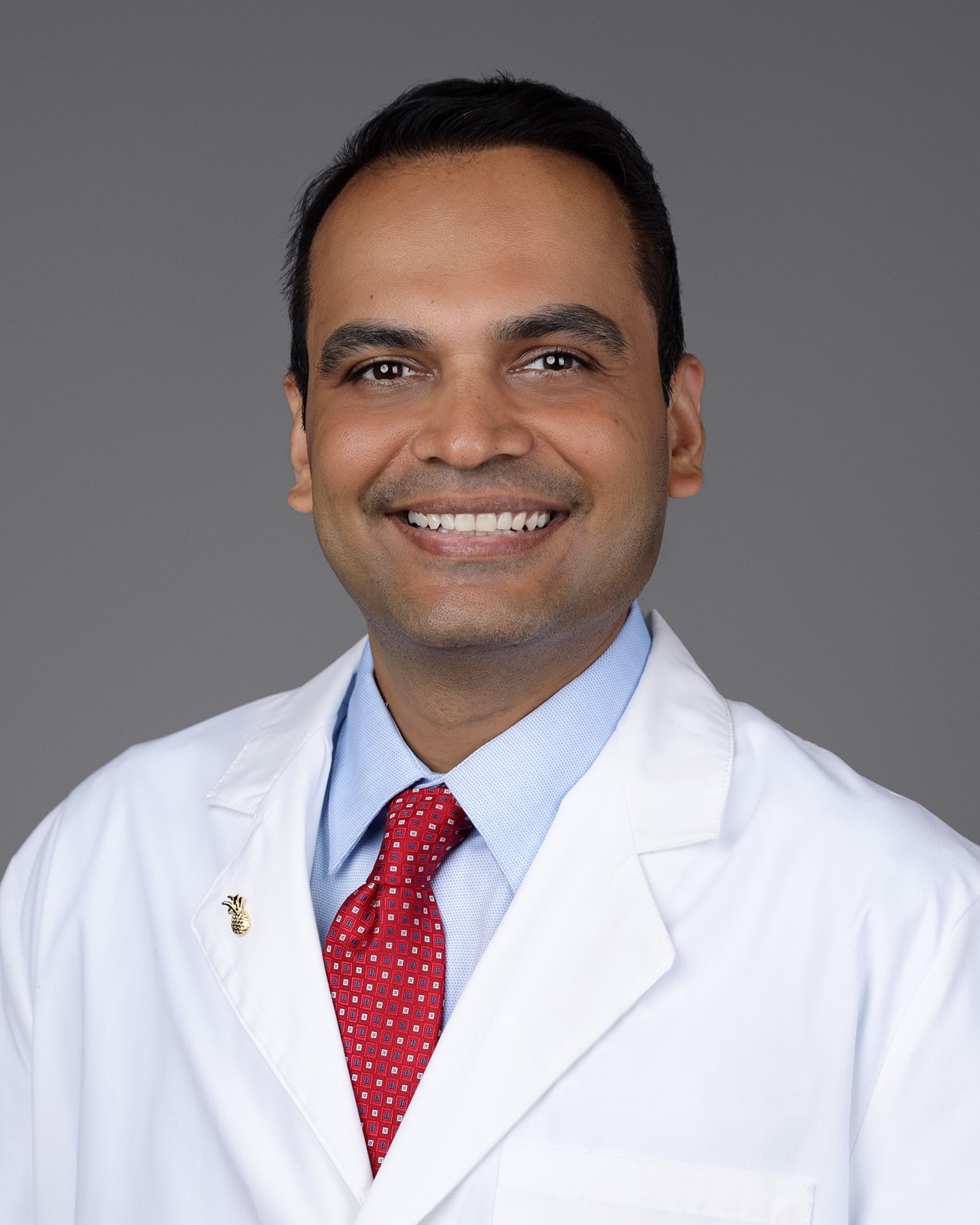

In modern structural heart disease management, the abundance of therapeutic options can be both liberating and paralyzing. When multiple comorbidities converge in a single patient, decisions become exponentially more complex. It’s a frequent dilemma — though ultimately a fortunate one for patients who have access to an experienced team and facility, says interventional cardiologist Nish Patel, M.D., director of the Structural Heart Program at Baptist Health Miami Cardiac & Vascular Institute.
At the Institute’s 42nd annual Echocardiography and Structural Heart Symposium, Dr. Patel presented the case of a 67-year-old female patient with critical aortic stenosis (velocity 4.98 m/s, mean gradient 66 mmHg, AVA 0.29 cm2), severe mitral stenosis (mean gradient 10 mmHg, MVA 0.69 cm2), reduced ejection fraction (25%-30%) and pulmonary hypertension with RVSP of 62 mmHg. In addition, she had a long history of heavy tobacco abuse.
The clinical challenge
“This is a case that requires complex analysis and discussion,” Dr. Patel said. “I believe in the concept of biological age. Not all patients in their 60s are the same. In this patient’s case, none of this is low risk. The team faced a crucial decision point: Do we do a double-valve surgery, use a staged transcatheter approach or do a combined TAVR-TMVR? We opted for the staged approach.”

Nish Patel, M.D.,
One month post-procedure, the results were encouraging. The patient’s ejection fraction had improved to 60%-65%, yet mitral stenosis persisted with a mean gradient of 14 mmHG and area of 1.1 cm2.
A new challenge
Dr. Patel reviewed treatment options, including surgical mitral valve replacement, a hybrid approach with SAPIEN in MAC via a surgical approach, TMVR with various LVOT modification techniques (BATMAN, SESAME) or alternative valve platforms such as Tendyne.
“We chose alcohol septal ablation before proceeding with TMVR,” he said. The procedure required multiple complex steps:
- Steerable catheter positioning over the anterior leaflet
- Balloon dilation of the anterior mitral leaflet using progressively larger balloons
- Balloon septostomy with a 14 mm Mustang balloon
- Deployment of a 26 mm balloon-expandable valve
- Placement of a 14mm SVP II plug to address paravalvular leak
“The immediate echocardiographic results on post-procedure day one were satisfactory, and the patient was discharged,” Dr. Patel reported.
Another complication
Unfortunately, one week after discharge, the patient was readmitted in critical care with acute liver failure (AST 4140, ALT 1099, total bilirubin 3.9 mg/dL and lactic acid 13.9 mmol/L), acute renal failure (creatinine 7.65 mg/dL, potassium 5.9 mmol/L) and acute anemia (hemoglobin 5.6 g/dL). Imaging revealed a paravalvular leak adjacent to the previously placed device, requiring emergent reintervention with transseptal puncture through the septal occlude for leak closure.
The patient underwent dialysis. Additionally, her liver failure resolved with hemodynamic stability. She was discharged to a rehabilitation facility about 30 days later.
The field of transcatheter mitral valve replacement continues to evolve at a remarkable pace, Dr. Patel remarked, thereby expanding treatment possibilities for patients who previously faced limited or no viable options. The willingness to push boundaries, combined with meticulous planning, technical expertise and the ability to manage complications can offer hope to even the most complex patients.
Cases of this complexity, however, demand a multidisciplinary infrastructure such as Miami Cardiac & Vascular Institute’s. Physicians referring patients should seek experienced centers where multidisciplinary resources, surgical versatility and collaborative expertise can support patients through every phase of treatment, he said.

